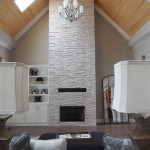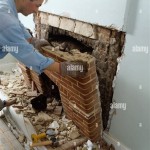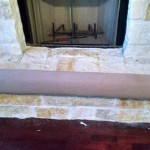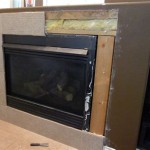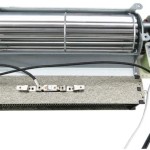Fireplace Wood Stove: A Comprehensive Guide
The fireplace wood stove represents a time-honored heating solution, offering both supplemental warmth and an aesthetically pleasing focal point within a dwelling. These appliances, distinct from open fireplaces, are engineered for improved efficiency in burning wood, resulting in greater heat output and reduced emissions. Understanding the various aspects of fireplace wood stoves, from their operational principles to proper installation and maintenance, is crucial for maximizing their benefits and ensuring safe operation.
A fireplace wood stove is essentially a self-contained heating unit designed to burn wood fuel within a closed chamber. This design contrasts sharply with the traditional open fireplace, which allows a significant amount of heat to escape up the chimney. The enclosed design of a wood stove allows for greater control over airflow and combustion, leading to a more complete burn of the wood and a more efficient transfer of heat into the living space.
The distinction between a wood stove and a fireplace insert should be clarified. While both appliances burn wood and are designed to heat a room, they differ in their placement and purpose. A wood stove is a freestanding unit, typically placed on a hearth or a designated area within a room. A fireplace insert, on the other hand, is designed to be installed directly into an existing masonry fireplace. Both options offer increased efficiency compared to an open fireplace, but the choice between them often depends on the existing structure and the homeowner's preferences.
Key Point 1: Understanding the Operational Principles
The efficiency of a fireplace wood stove hinges on several key operational principles. These include combustion control, heat transfer, and proper venting. Each of these elements plays a critical role in maximizing heat output, minimizing emissions, and ensuring safe operation.
Combustion control is achieved through adjustable air inlets that regulate the amount of oxygen supplied to the fire. By carefully controlling the airflow, the homeowner can optimize the burning process, ensuring that the wood burns completely and efficiently. This reduces the amount of unburnt fuel that escapes as smoke, leading to cleaner emissions and a more complete use of the wood's energy potential.
Heat transfer is another crucial aspect of wood stove operation. Wood stoves are designed to radiate heat directly into the room, providing a consistent and comfortable warmth. Many modern wood stoves also incorporate features such as convection fans or heat exchangers to further enhance heat transfer. These features help to circulate warm air throughout the room, ensuring a more even distribution of heat.
Proper venting is essential for safely removing combustion gases from the wood stove and directing them out of the dwelling. This is typically achieved through a chimney or a flue system. The chimney must be properly sized and installed to ensure adequate draft, which is the upward flow of air that carries the exhaust gases away from the stove. A blocked or improperly sized chimney can lead to dangerous buildup of carbon monoxide and other harmful gases.
Furthermore, understanding the type of wood used is critical for efficient and safe operation. Seasoned hardwood is the preferred fuel for wood stoves. Seasoned wood has a lower moisture content than green wood, which allows it to burn more efficiently and produce more heat. Burning green wood can also lead to creosote buildup in the chimney, increasing the risk of chimney fires.
Key Point 2: Selecting the Right Wood Stove
Choosing the appropriate fireplace wood stove involves considering several factors, including the size of the area to be heated, the desired heat output, efficiency ratings, and any applicable regulations or environmental concerns. A careful assessment of these factors is essential for selecting a wood stove that will meet the homeowner's needs and provide reliable heating for years to come.
The size of the area to be heated is a primary consideration. Wood stoves are rated in terms of their heat output, typically measured in British Thermal Units (BTUs). A larger area will require a wood stove with a higher BTU rating. It is important to select a wood stove that is appropriately sized for the space. An oversized wood stove can lead to overheating, while an undersized wood stove may not provide sufficient heat.
Efficiency ratings are also an important factor to consider. Wood stoves are typically rated based on their efficiency, which is the percentage of the wood's energy that is converted into usable heat. Higher efficiency ratings indicate a more efficient stove, which means that it will burn less wood to produce the same amount of heat. This can save the homeowner money on fuel costs and reduce their environmental impact.
Regulations and environmental concerns should also be taken into account. Many jurisdictions have regulations regarding the types of wood stoves that can be installed, as well as requirements for emissions. It is important to choose a wood stove that meets these regulations and minimizes its environmental impact. Look for wood stoves that are certified by the Environmental Protection Agency (EPA) as meeting current emissions standards.
The construction materials of the wood stove are also important. Cast iron wood stoves are known for their durability and ability to retain heat. Steel wood stoves heat up more quickly but may not retain heat as well as cast iron. The choice between cast iron and steel often comes down to personal preference.
Key Point 3: Installation and Maintenance
Proper installation and regular maintenance are crucial for ensuring the safe and efficient operation of a fireplace wood stove. Improper installation can lead to dangerous conditions, such as carbon monoxide poisoning or chimney fires. Regular maintenance is necessary to keep the wood stove operating at peak performance and prevent potential problems.
Installation should always be performed by a qualified professional who is experienced in installing wood stoves and chimneys. The installation process involves connecting the wood stove to the chimney, ensuring that the chimney is properly sized and installed, and verifying that the wood stove is properly vented. The professional will also ensure that the wood stove is installed in accordance with all applicable building codes and regulations.
Regular maintenance is essential for keeping the wood stove operating safely and efficiently. This includes regular cleaning of the chimney to remove creosote buildup. Creosote is a flammable substance that can accumulate in the chimney over time, increasing the risk of chimney fires. The frequency of chimney cleaning will depend on the amount of wood burned and the type of wood used.
The wood stove itself should also be inspected and cleaned regularly. This includes removing ash from the firebox, checking for any cracks or damage to the stove, and cleaning the glass door to remove soot and creosote. Any damaged parts should be replaced promptly to ensure the wood stove continues to operate safely and efficiently.
Furthermore, it is critical to have working carbon monoxide detectors installed in the dwelling. Carbon monoxide is a colorless, odorless gas that can be produced by burning wood. Exposure to carbon monoxide can be deadly. Carbon monoxide detectors will alert the occupants of the dwelling to the presence of carbon monoxide, allowing them to take appropriate action.
Finally, proper storage of firewood is important. Firewood should be stored in a dry, well-ventilated area to prevent it from rotting or becoming infested with pests. It should also be stored away from the dwelling to reduce the risk of fire.
In summary, a fireplace wood stove offers an efficient and appealing heating solution, but requires careful consideration of operational principles, selection, installation, and maintenance to ensure optimal performance and safety. By understanding these key aspects, homeowners can enjoy the benefits of wood heating while minimizing potential risks.

Can You Install A Wood Stove In Fireplace Direct Stoves

Wood Burning Stoves Sussex Fireplace Gallery

Freestanding Wood Burning Stoves Sierra Hearth And Home

Wood Burning Stoves In Milton Keynes Inspirations

Wood Burning S Hearthstone Stoves Vermont

Stoves Wood Gas Pellet Lopi

F2450 Non Catalytic Wood Stoves Burning By Regency

What Is A Freestanding Wood Stove Fireplace Service Experts

Wood Stoves Vs Fireplaces Burning Hearth S

How To Heat Your House With Just A Wood Burning Stove Chesneys
Related Posts

